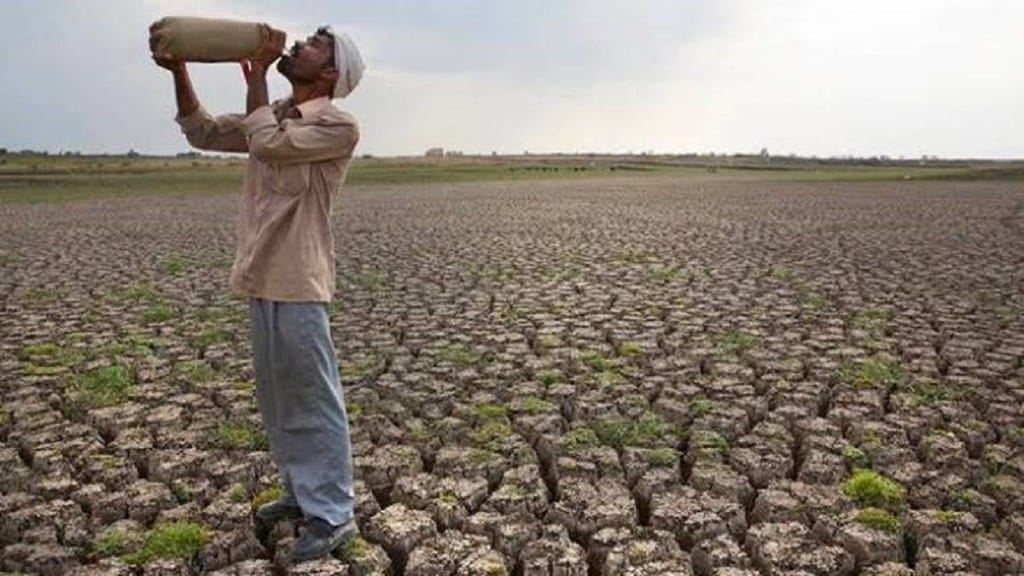The above-normal temperature that has prevailed for most part of the current month will continue for the next four months, while “the summer months of April, May and June are expected to be searing, with mercury climbing to record levels”, private weather forecaster Skymet said on Monday.
Skymet’s prediction comes close on the heels of the India Meteorological Department’s (IMD) statement that higher day temperature prevailing in some parts of the country – maximum temperatures are above normal by 3-5 degrees in some regions – would not recede soon.
These forecasts have increased the concerns over the standing rabi crop, especially wheat and horticulture, and chances of the gross value added (GVA) in “agriculture allied activities” losing some momentum in 2023-24. The agriculture sector has been growing at an average annual growth rate of 4.6% during the last six years – it grew 3.3% in FY21, 3% in FY22 and is seen to grow at 3.5% in FY23 (first advance estimate). The “agriculture and allied activities” clocked a robust growth in GVA of 4.6% during H1FY23, despite delayed monsoon and kharif sowing activities.
In March last year, the average maximum temperature was 30.7 degree Celsius, the highest in 127 years.
The likelihood of scorching summer heat could be damaging for the wheat crop which has just the entered flowering stage. Lower wheat output could also lead to a depletion of the official stocks of the grain.
Stating that the current month will be recorded at “hottest on record”, Skymet said that “prolonged intemperate conditions are construed as pernicious for most rabi crops over the northern, central and eastern parts of the country.”
The forecaster said persistent abnormal conditions would not be conducive for the farming sector as most of the rabi crops are at different stages of the cycle, some of them at crucial stages.
If the forecast comes true, for the second year in a row, heatwaves are expected to hit the country’s wheat output, despite the area under the key rabi crop scaling to new highs.
The private agency said north India perpetually starved during the winter months. Major portions of plains covering Punjab, Haryana, Rajasthan, Chandigarh, Delhi and Uttar Pradesh literally had a drought.
“With the exception of a few days in early March, there will be no respite from high temperature during next three months with day temperature likely ruling at least 5 to 6 Celsius above ‘normal,’ especially in key wheat-growing regions in north-west and central India,” GP Sharma, president, meteorology and climate change, Skymet, told FE.
IMD is likely to provide a temperature outlook for the next few months on Tuesday.
The wheat stock position is seen to be only marginally above the buffer by April. The Food Corporation of India’s wheat stocks are expected to be plummet to 9.5 million tonne (MT) or below by April 1, the lowest since 2017. The buffer for April 1 is 7.4 MT.
The government’s wheat procurement drive for 2023-24 marketing year (April-June) is likely to be hit with mandi rates – prices fetched by farmers — is likely to rule above the minimum support prices of `2,125/quintal because of lower production and robust domestic demand.
Given that cereal inflation is one of the key drivers of the consumer price index (CPI), which is keenly watched by the monetary authority under the flexible inflation-targeting framework, any dip in the rabi wheat production or the quality of these staple grains could make it that much more difficult for it to curb the sticky generalised price pressures in the economy.
The country is already experiencing elevated cereal inflation (16.1%) in January, 2023, while wheat inflation was 25% last month.
Last week, the agriculture ministry set up a committee to monitor the impact of hot and dry weather conditions on standing wheat crops.
For the current crop year (2022-23), the government has estimated a record wheat harvest of 112.18 MT. Total area planted with wheat crop has risen by only 0.13 million hectare (MH) to 34.32 MH in the current crop year from the year-ago period.

